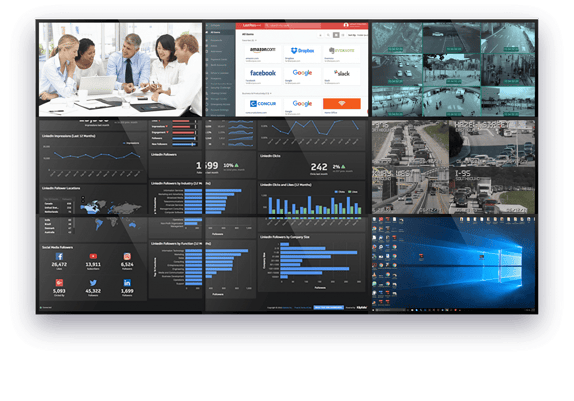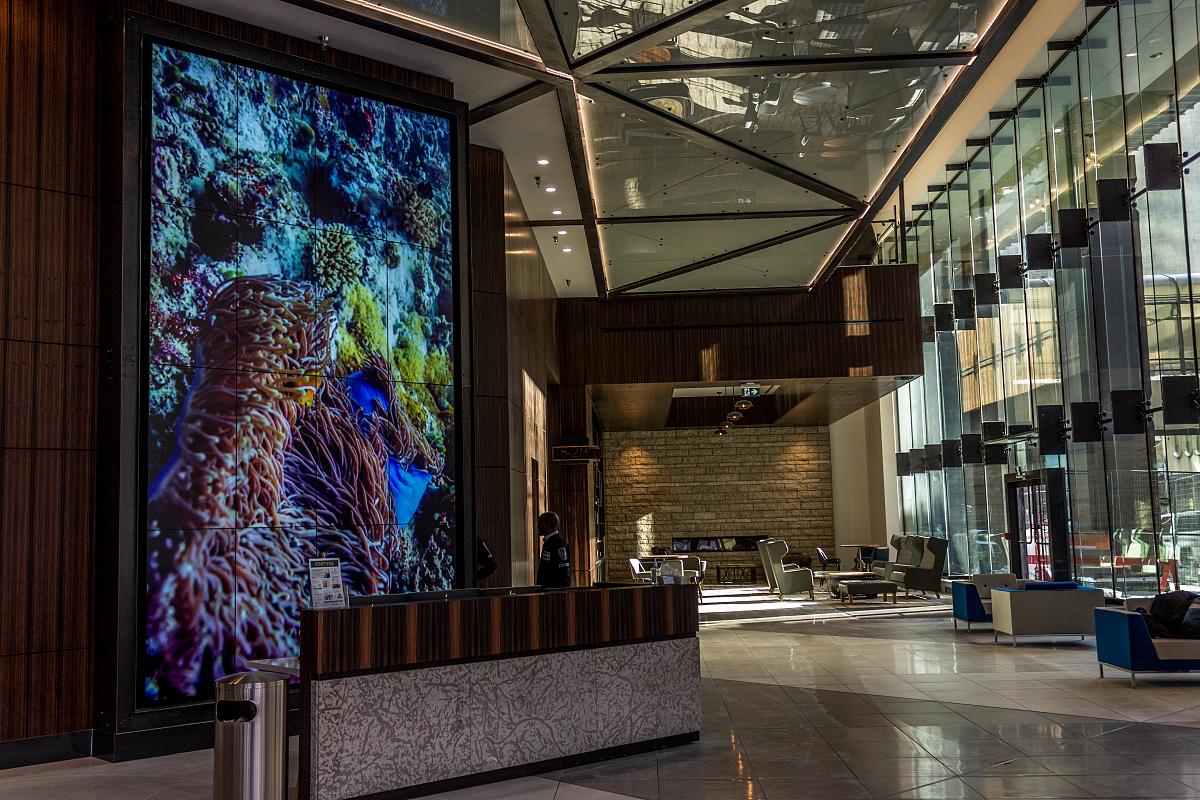Video walls seem to be popping up everywhere these days. It isn’t hard to see why—they have been eye-catching and extremely engaging ever since they were first introduced in the 1980s, but back then their phenomenal cost limited them to a few specific applications. Modern technology has made video walls more cost-efficient; enabling their use for almost any application.
Engage audiences

Digital signs and billboards are highly engaging and work to catch the eye of passers-by like no other technology can. That allows them to deliver a commercial message quickly and effectively even amid the clamor of distractions, and it also allows them to deliver critical safety and directional information as well. This makes video wall technology ideal for a huge variety of industries and use-cases including retail, airports, hospitals, financial institutions, universities and educational settings, live events, hospitality and entertainment, and many more. They are also implemented in the service industry, particularly Quick Service Restaurants (QSR) as menus and interactive information board.
Video displays have become popular in digital signage in part because individual digital signs have become commonplace. To stand out from the crowd, companies realized they needed something larger than an individual display. Now that display technology has grown so dramatically, a great alternative to the traditional grid-display setup is to deploy unique-looking, artistic video walls. These are basically pieces of art made of multiple displays that stand out from the crowd and generate a greater impact on the audience.
Data Visualization and Collaboration

Control rooms and command centers are sites that need to monitor and analyze vast amounts of information to detect any failures in a system, monitor security or vital data, ensure smooth operations etc. Large displays have long been prime choices for effective monitoring and data analysis. They provide enough real estate to display multiple sources simultaneously, like live camera feeds, maps, Key Performance Indicators (KPIs), web content, etc. Displays are a vital part of control rooms.
Information has become paramount to businesses and organizations today. Individuals and teams often need to absorb and analyze large amounts of data in order to make more informed decisions. With all the available data it can become overwhelming. Dashboards are a great way to gather and display information and KPIs, and video walls are great platforms to visualize dashboards and other data, allowing teams to focus on relevant information when needed. In an office environment, networked displays can be deployed in key locations (management office, conference rooms, huddle rooms, etc.) for team members to collaborate.
Plenty of other uses
Of course, video walls are not just used for delivering messages and visualizing data—they have many popular applications:
- Immersive experiences and virtual reality
- Art installations and theatrical backgrounds
- Museums, public spaces
- Broadcast and live events
- Public talks, concerts, and gatherings of all kinds
- Churches and other places of worship
In the end, a video wall can be used for almost anything you can imagine. The ability to create a high resolution, lifelike, animated and highly visible display lends itself to a huge number of purposes, what we’ve covered here is just scratching the surface.
Check out our 2018 Buyers Guide today.
At Userful we understand that buying a video wall can be an overwhelming experience, so we made it our mission to provide a solution that helped simplify the decision-making and deployment.
START READING
